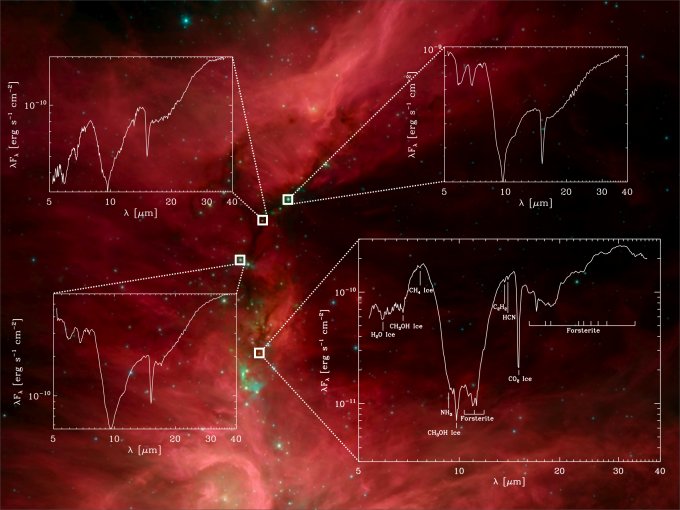| EPoS Contribution |
|
The Spitzer IRS Protostar Survey of the Orion Molecular Cloud Complex
Charles A. Poteet The University of Toledo, Toledo, USA | |
| The richest collection of protostars within 500 pc of the Sun is found in the Orion molecular cloud complex, which contains protostars in a variety of environments, from clustered regions strongly heated by OB stars to relative isolation. We have obtained mid-infrared spectra (5-36 microns) of 349 protostellar candidates in Orion with Spitzer's Infrared Spectrograph (IRS). The spectra reveal that the sample includes Class 0, Class I, and flat spectrum sources, as well as contamination by Class II sources and galaxies. We present typical spectra of the different evolutionary classes, focusing on the mineralogy and ice content of the protostellar envelopes, and we examine the presence of ices (water, methanol, methane, ammonia, and carbon dioxide) as a function of both SED class and environment. The spectra exhibit copious silicate and ice absorption features that are typically found in the circumstellar environments of the youngest, most embedded protostars. In one deeply embedded protostar, we detect crystalline silicate (forsterite) absorption near 11, 16, 19, 23, 28, and 34 microns. Such features are typically detected in emission around the circumstellar disks of T Tauri stars; this is the first detection of such absorption toward an embedded protostar. Using radiative transfer methods, we show that this protostellar envelope possesses a significant crystalline silicate mass fraction abundance (0.20-0.30), and we discuss the implications of the presence of crystalline silicates in this cold environment. | |
 | |
| Caption: Spitzer IRAC image of OMC-2/3 region with selected IRS spectra of protostars shown. The main spectral features that we observe are labeled in bottom right spectrum: water ice, methanol ice, amorphous silicates, methane ice, ammonia ice, and carbon dioxide ice. In addition, the bottom right spectrum exhibits significant absorption by forsterite. Note that the feature around 17 microns is a sky-subtraction artifact, possibly arising from molecular hydrogen. | |
| Collaborators: S.T. Megeath, U. of Toledo, USA D.M. Watson, U. of Rochester, USA N. Calvet, U. of Michigan, USA M.K. McClure, U. of Michigan, USA W.J. Fischer, U. of Toledo, USA |
Suggested Session:
Chemistry, Cores and Collapse, Early Phases of Disks |

